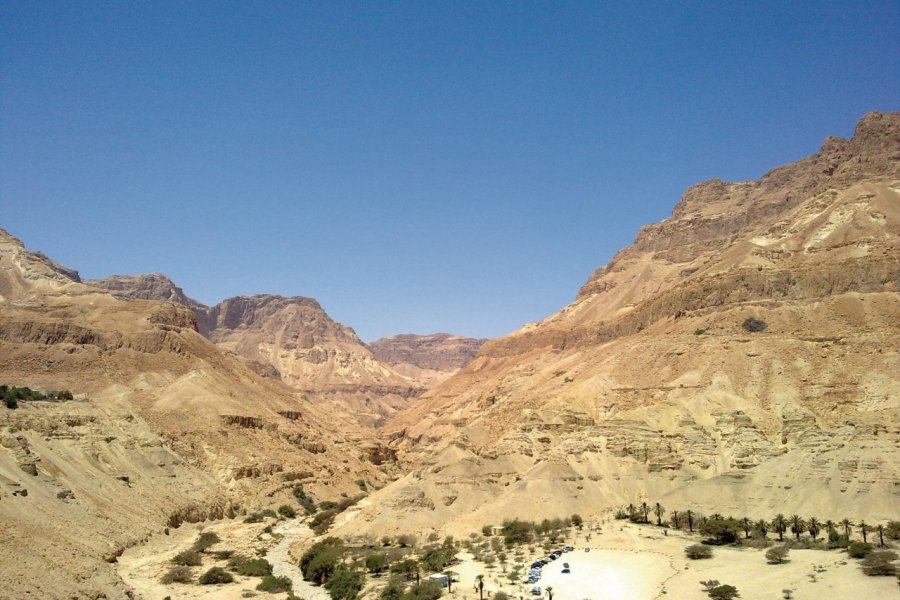Travel Guide Ein Gedi
Find an accommodation
Advertising
The oasis of Ein Gedi ("The Spring of the Kid" in Hebrew) overlooks the western shore of the Dead Sea. Human presence at Ein Gedi dates back to at least 5000 BC, as attested by the ruins of the small Chalcolithic temple above the spring that gives the site its name. The name of Ein Gedi is often mentioned in the Bible, where David is said to have taken refuge after being pursued by King Saul. It was also in a cave at Ein Gedi that Simon Bar Kochba, leader of the revolt against the Romans in 132 CE, took refuge. The first permanent human settlements date back to the 7th century BC.The Jewish presence here lasted until the 6th century. The site was then abandoned until Jewish soldiers reoccupied it after the War of Independence, and a kibbutz was founded in 1956.Today, Ein Gedi is a major tourist attraction, boasting a warm climate all year round and offering both spa treatments by the Dead Sea and opportunities for walks in the desert or among the lush vegetation surrounding the streams and waterfalls of the nature reserve. Within a small area, the reserve features a wide variety of natural environments, varying according to altitude. Tropical, desert, steppe and Mediterranean plants can all be found here. Hikers will also find it relatively easy to observe the fauna of the Judean Desert. The animals are less numerous in the lower part of the gorge, which is too busy with tourists, but the birds are innumerable and easily visible, even in broad daylight. Birds of prey are numerous: vultures, eagles and falcons nest in the cliffs.
What to visit Ein Gedi?
Suggested addresses Ein Gedi
Weather at the moment
Advertising
Organize your trip with our partners Ein Gedi
Transportation
Book your plane tickets
Car Rental
Boat rental
Accommodation & stays
Find a hotel
Holiday rental
Find your campsite
Tailor-made trip
Immersion travel
Services / On site
Activities & visits
Find a doctor
Ein Gedi travel inspiration
Find unique Stay Offers with our Partners
Pictures and images Ein Gedi
Other destinations nearby Ein Gedi
25 km away








